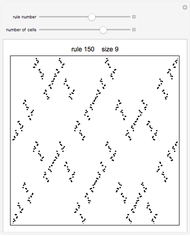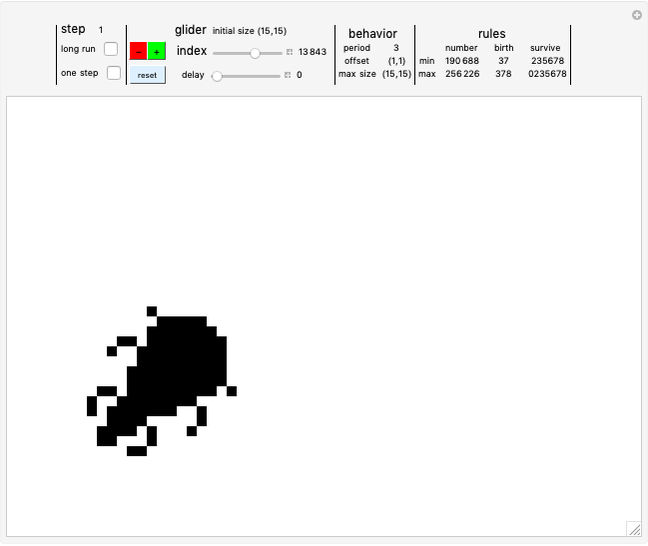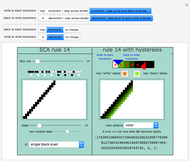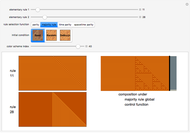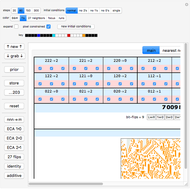Cellular Automaton Classification according to Attractor Type

Requires a Wolfram Notebook System
Interact on desktop, mobile and cloud with the free Wolfram Player or other Wolfram Language products.
Choose a class of attractor type and a rule from that attractor type. The top graphic shows an evolution of the rule from random initial conditions. The bottom graphic shows a perturbed evolution of the CA on top, with affected cells highlighted. Change the number of perturbed cells, the location of perturbation, or the initial conditions.
Contributed by: Matthew Gorski and John Lindner (March 2011)
Based on work by: Wentian Li and Norman Packard
Created during research funded by: NSF-REU grant DMR-0649112
Open content licensed under CC BY-NC-SA
Snapshots
Details
The classification according to attractor type is from W. Li and N. Packard, "The Structure of the Elementary Cellular Automata Rule Space," Complex Systems, 4(3), 1990 pp. 281-297. The classes are (1) null point, (2) homogenous, (3) periodic, (4) locally periodic, and (5) globally chaotic. There are 88 rules, reduced from the 256 elementary rules under the left-to-right transformation, the 0 to 1 transformation, or a combination. In its default setting, the Demonstration highlights new black cells and new white cells only. Different color settings can reveal the unhighlighted, perturbed evolution or the changes superimposed on the unaffected cells.










